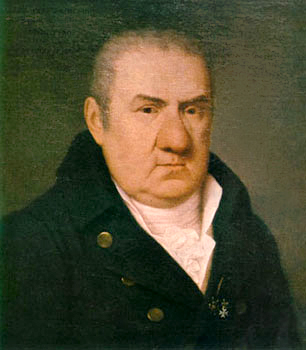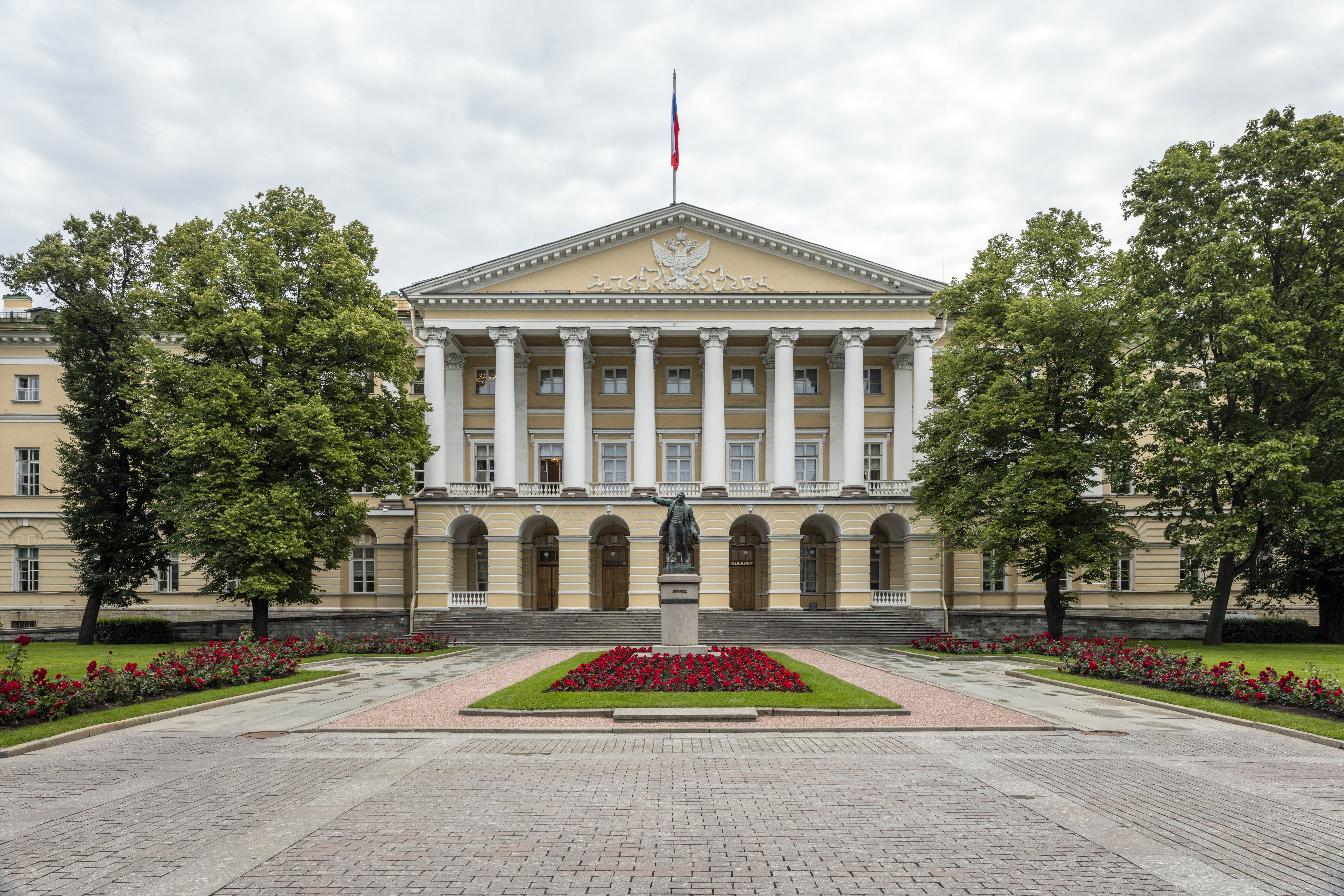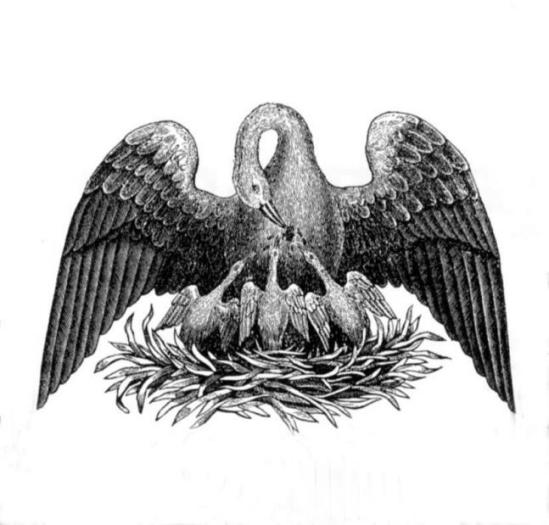|
Smolny Institute Of Noble Maidens
The Smolny Institute of Noble Maidens of Saint Petersburg (Russian: –°–Љ–Њ–ї—М–љ—Л–є –Є–љ—Б—В–Є—В—Г—В –±–ї–∞–≥–Њ—А–Њ–і–љ—Л—Е –і–µ–≤–Є—Ж –°–∞–љ–Ї—В-–Я–µ—В–µ—А–±—Г—А–≥–∞) was the first women's educational institution in Russia that laid the foundation for women's education in the country. It was Europe's first public educational institution for girls. History Institute under Catherine the Second It was originally called the Imperial Educational Society of Noble Maidens. It was founded on the initiative of Ivan Betskoy and in accordance with a decree signed by Catherine the Second on May 16, 1764. This society, as stated in the decree, was created in order to "give the state educated women, good mothers, useful members of the family and society". The name Smolny comes from the Smolny Palace, built in 1729 by Peter I near the village of Smolny, in which there was a tar factory. Catherine, a fan of the progressive ideas of Montaigne, Locke and Fenelon, wanted to establish an educat ... [...More Info...] [...Related Items...] OR: [Wikipedia] [Google] [Baidu] |
Stepan Galaktionov
Stepan Filippovich Galaktionov (russian: –°—В–µ–њ–∞–љ –§–Є–ї–Є–њ–њ–Њ–≤–Є—З –У–∞–ї–∞–Ї—В–Є–Њ–љ–Њ–≤; 6 July 1779, Saint Petersburg4 December 1854, Saint Petersburg)¬†was a Russian lithographer, graphic artist, and cityscape painter. Biography In 1785, he was admitted to the Imperial Academy of Arts which, at that time, had an elementary school. His teachers included Ignaz Sebastian Klauber, Mikhail Matveevich Ivanov, and Semyon Shchedrin. He graduated in 1800 with a Certificate of the First Degree. In 1806, he was named an honorary Academician. He later became a full Academician for landscape painting, based on his depiction of the lapidary factory in Peterhof. He was a teacher at the Academy from 1817 until his death. In the 1820s, he was one of the first Russian artists to master lithography. In 1830, he was promoted to Advisor for landscape engraving. The following year, when that title was abolished, he was designated a Professor, Third Degree. In 1850, he was named an H ... [...More Info...] [...Related Items...] OR: [Wikipedia] [Google] [Baidu] |
Maison Royale De Saint-Louis
The Maison Royale de Saint-Louis was a boarding school for girls set up on 15 June 1686 at Saint-Cyr (what is now the commune of Saint-Cyr-l'√Йcole, Yvelines) in France by king Louis XIV at the request of his second wife, Fran√Іoise d'Aubign√©, Marquise de Maintenon, who wanted a school for girls from impoverished noble families. The establishment lost its leading role on the deaths of Louis and then Maintenon, but it nevertheless marked an evolution in female education under the Ancien R√©gime. Its notable students included Maintenon's niece Marthe-Marguerite Le Valois de Villette de Mursay, marquise de Caylus, and Napoleon's sister Elisa Bonaparte, grand duchess of Tuscany. It remained in existence during the first years of the French Revolution, but closed for good in March 1793, with its empty buildings being taken over by the √Йcole sp√©ciale militaire de Saint-Cyr in 1808. However, the ''Maison royale'' later provided Napoleon with the inspiration for his ''Maison des demoise ... [...More Info...] [...Related Items...] OR: [Wikipedia] [Google] [Baidu] |
Serbia
Serbia (, ; Serbian language, Serbian: , , ), officially the Republic of Serbia (Serbian language, Serbian: , , ), is a landlocked country in Southeast Europe, Southeastern and Central Europe, situated at the crossroads of the Pannonian Basin and the Balkans. It shares land borders with Hungary to the north, Romania to the northeast, Bulgaria to the southeast, North Macedonia to the south, Croatia and Bosnia and Herzegovina to the west, and Montenegro to the southwest, and claims a border with Albania through the Political status of Kosovo, disputed territory of Kosovo. Serbia without Kosovo has about 6.7 million inhabitants, about 8.4 million if Kosvo is included. Its capital Belgrade is also the List of cities in Serbia, largest city. Continuously inhabited since the Paleolithic Age, the territory of modern-day Serbia faced Slavs#Migrations, Slavic migrations in the 6th century, establishing several regional Principality of Serbia (early medieval), states in the early Mid ... [...More Info...] [...Related Items...] OR: [Wikipedia] [Google] [Baidu] |
Novocherkassk
Novocherkassk (russian: –Э–Њ–≤–Њ—З–µ—А–Ї–∞ћБ—Б—Б–Ї, lit. ''New Cherkassk'') is a city in Rostov Oblast, Russia, located near the confluence of the Tuzlov and Aksay Rivers, the latter a distributary of the Don River. Novocherkassk is best known as the cultural capital of the Cossacks, and as the official capital of the Don Cossacks. Population: 168,746 ( 2010 Census); 170,822 ( 2002 Census); 178,000 (1974); 95,453 (1959); 75,917 (1939); 51,963 (1897). History Imperial era Foundation Although the first settlement in the region was founded by Temroqwa Idar,Khasht, Ali. ''Circassian Prince Temroqwa Idar.'' the city of Novocherkassk was founded in 1805 by Lieutenant-general Matvei Platov, the Ataman of the Don Cossacks, as the administrative center of the Don Host Oblast. It was established in reaction to the original administrative center, the ''stanitsa'' of Cherkassk, being deemed unsuitable as the capital for the Don Cossacks for several reasons. Cherkassk was repeatedly flooded ... [...More Info...] [...Related Items...] OR: [Wikipedia] [Google] [Baidu] |
Konstantin Ushinsky
Konstantin Dmitrievich Ushinsky (russian: –Ъ–Њ–љ—Б—В–∞–љ—В–ЄћБ–љ –Ф–Љ–ЄћБ—В—А–Є–µ–≤–Є—З –£—И–ЄћБ–љ—Б–Ї–Є–є; uk, –Ъ–Њ—Б—В—П–љ—В–ЄћБ–љ –Ф–Љ–Є—В—А–ЊћБ–≤–Є—З –£—И–ЄћБ–љ—Б—М–Ї–Є–є, translit=Kostiantyn Dmytrovych Ushynskyi) ( вАУ ) was a Russian teacher and writer, credited as the founder of scientific pedagogy in Russia.L.G. Guseva"Konstantin Dmitrievich Ushinsky: The Founder of Scientific Pedagogy in the 19th Century Russia" History of Education & ChildrenвАЩs Literature, XIII, 1 (2018), pp. 479-491 (in English)''Ushinsky'' article in [...More Info...] [...Related Items...] OR: [Wikipedia] [Google] [Baidu] |
Russian Nobility
The Russian nobility (russian: –і–≤–Њ—А—П–љ—Б—В–≤–Њ ''dvoryanstvo'') originated in the 14th century. In 1914 it consisted of approximately 1,900,000 members (about 1.1% of the population) in the Russian Empire. Up until the February Revolution of 1917, the noble estates staffed most of the Russian government and possessed a Gentry assembly. The Russian word for nobility, ''dvoryanstvo'' (), derives from Slavonic ''dvor'' (–і–≤–Њ—А), meaning the court of a prince or duke (''kniaz''), and later, of the tsar or emperor. Here, ''dvor'' originally referred to servants at the estate of an aristocrat. In the late 16th and early 17th centuries, the system of hierarchy was a system of seniority known as ''mestnichestvo''. The word ''dvoryane'' described the highest rank of gentry, who performed duties at the royal court, lived in it (''Moskovskie zhiltsy''), or were candidates to it, as for many boyar scions (''dvorovye deti boyarskie'', ''vybornye deti boyarskie''). A nobleman is call ... [...More Info...] [...Related Items...] OR: [Wikipedia] [Google] [Baidu] |
Active State Councillor
Active State Councillor (russian: –і–µ–є—Б—В–≤–Є—В–µ–ї—М–љ—Л–є —Б—В–∞—В—Б–Ї–Є–є —Б–Њ–≤–µ—В–љ–Є–Ї, deystvitelnyi statskiy sovetnik) was the civil position (class) in the Russian Empire, according to the Table of Ranks introduced by Peter the Great in 1722. That was a civil rank of the 4th class and equal to those of Major-General in the Army, Rear Admiral in the Navy, and the court rank of Chamberlain (up to 1809). The rank gave the right of hereditary nobility. The rank holder should be addressed as ''Your Excellency'' (russian: –Т–∞—И–µ –Я—А–µ–≤–Њ—Б—Е–Њ–і–Є—В–µ–ї—М—Б—В–≤–Њ, Vashe Prevoskhoditelstvo). Overview Those who had the rank served as directors of department, governors, mayors. From the middle of the 19th century, the rank of Active state councilor was included in the top of the four groups of civil officials. The group (from 1st to 5th grade) represented the high state bureaucracy, which determined the policy of the Russian Empire. The rankholders of this group had the hig ... [...More Info...] [...Related Items...] OR: [Wikipedia] [Google] [Baidu] |
Colonel
Colonel (abbreviated as Col., Col or COL) is a senior military officer rank used in many countries. It is also used in some police forces and paramilitary organizations. In the 17th, 18th and 19th centuries, a colonel was typically in charge of a regiment in an army. Modern usage varies greatly, and in some cases, the term is used as an honorific title that may have no direct relationship to military service. The rank of colonel is typically above the rank of lieutenant colonel. The rank above colonel is typically called brigadier, brigade general or brigadier general. In some smaller military forces, such as those of Monaco or the Vatican, colonel is the highest rank. Equivalent naval ranks may be called captain or ship-of-the-line captain. In the Commonwealth's air force ranking system, the equivalent rank is group captain. History and origins By the end of the late medieval period, a group of "companies" was referred to as a "column" of an army. According to Raymond Ol ... [...More Info...] [...Related Items...] OR: [Wikipedia] [Google] [Baidu] |
Giacomo Quarenghi
Giacomo Quarenghi (; rus, –Ф–ґ–∞ћБ–Ї–Њ–Љ–Њ –Ъ–≤–∞—А–µћБ–љ–≥–Є, D≈Њ√°komo Kvar√©ngi, ЋИd Рak…Щm…Щ kv…РЋИr ≤en ≤…° ≤…™; 20 or 21 September 1744) was an Italian architect who was the foremost and most prolific practitioner of neoclassical architecture in Imperial Russia, particularly in Saint Petersburg. He brought into vogue an original monumental style, of Palladian inspiration, which was a reference for many architects who worked in Russia. He has been described as "the last of the great architects of Italy". Career in Italy Born in Rota d'Imagna near Bergamo to an Italian noble family, Quarenghi was destined by his parents for a career in law or the church but initially was allowed to study painting in the Bergamo studio of G. Reggi, himself a student of Tiepolo. Young Quarenghi was well educated and widely read. Traveling through Italy he visited Vicenza, Verona, Mantua and Venice, the places where he made the longest stays. He made drawings of the Greek temples at Paestum ( ... [...More Info...] [...Related Items...] OR: [Wikipedia] [Google] [Baidu] |
Architect
An architect is a person who plans, designs and oversees the construction of buildings. To practice architecture means to provide services in connection with the design of buildings and the space within the site surrounding the buildings that have human occupancy or use as their principal purpose. Etymologically, the term architect derives from the Latin ''architectus'', which derives from the Greek (''arkhi-'', chief + ''tekton'', builder), i.e., chief builder. The professional requirements for architects vary from place to place. An architect's decisions affect public safety, and thus the architect must undergo specialized training consisting of advanced education and a ''practicum'' (or internship) for practical experience to earn a Occupational licensing, license to practice architecture. Practical, technical, and academic requirements for becoming an architect vary by jurisdiction, though the formal study of architecture in academic institutions has played a pivotal role in ... [...More Info...] [...Related Items...] OR: [Wikipedia] [Google] [Baidu] |
Smolny Institute
The Smolny Institute (russian: –°–Љ–Њ–ї—М–љ—Л–є –Є–љ—Б—В–Є—В—Г—В, ''Smol'niy institut'') is a Palladian edifice in Saint Petersburg that has played a major part in the history of Russia. History The building was commissioned from Giacomo Quarenghi by the Society for Education of Noble Maidens and constructed in 1806–08 to house the Smolny Institute of Noble Maidens, established at the urging of Ivan Betskoy and in accordance with a decree of Catherine II (the Great) in 1764, borrowing its name from the nearby Smolny Convent. The establishment of the institute was a significant step in making education available for females in Russia: "The provision of formal education for women began only in 1764 and 1765, when Catherine II established first the Smolny Institute for girls of the nobility in Saint Petersburg and then the Novodevichii Institute for the daughters of commoners." The Smolny was Russia's first educational establishment for women and continued to function under ... [...More Info...] [...Related Items...] OR: [Wikipedia] [Google] [Baidu] |
Office Of The Institutions Of Empress Maria
The Office of the Institutions of Empress Maria (russian: –Т–µ–і–Њ–Љ—Б—В–≤–Њ —Г—З—А–µ–ґ–і–µ–љ–Є–є –Є–Љ–њ–µ—А–∞—В—А–Є—Ж—Л –Ь–∞—А–Є–Є) was the name of the Imperial government office of charity in Imperial Russia, and the 4th branch of His Imperial Majesty's Own Chancellery between 1828 and 1917. The office was named after Empress Maria, who united her management of the Moscow Orphanage with that of the orphanage and the Foundling Hospital of St. Petersburg on 2 May 1797. The institutions managed orphanages, care of the invalids, the blind and the deaf, education for women and children, poor houses and hospitals, many of the institutions founded by the Empress. After Empress Maria's death in 1828, it was incorporated into the Imperial Chancellery of the Tsar and given the name ''Office of the Institutions of Empress Maria'' in 1854. In 1880 it was renamed to ''His Imperial Majesty's Own Chancellery for Institutions of Empress Mary''. The office was abolished in 1917, the year when ... [...More Info...] [...Related Items...] OR: [Wikipedia] [Google] [Baidu] |









